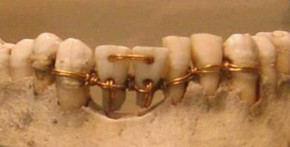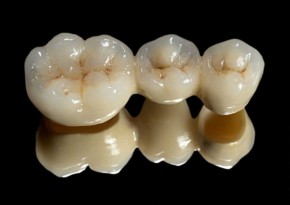So what are Dental Crowns and why would I need one?
Men have been making dental crowns for teeth since ancient Egypt. For most of recorded history, crowns have been cast in gold, using the lost wax technique. The first skeletal example of this is an Etruscan from 700 BC.

Crowns are dental restorations that cover all the visible surfaces of a tooth.
Dental Crowns were made fist out of cast gold. In the 1950’s, first composite resins and then porcelains were applied to the outer surface of the crowns to give a more tooth-like appearance. In the 1980’s all ceramic (porcelain) crowns became popular. By the mid 2000’s all Zirconia crowns became mainstream and are now widely used. Zirconia is a synthetic glass most famous for its use as an alternative to diamonds.
Crowns are generally used for four dental purposes.
- They are used to restore significant tooth loss, usually resulting from deep decay (dental cavity) or the fracturing off of large potions of tooth structure.
- Crowns are used to treat teeth that are fractured in order to prevent the fractured portions from breaking away from the tooth and potentially causing further complications or to eliminate pain coming from the fractured tooth.
- They are made to protect molars from fracturing apart after a root canal is done on the tooth, a process that makes the tooth more brittle and thus more inclined to break.
- Crowns are also used to cosmetically alter a tooth or teeth, allowing for a different shape, color or position of the tooth being restored.
The process for making a crown usually involves two visits.
On the first visit, the tooth is prepared by removing diseased tooth and/or reducing tooth structure around the sides of the tooth and off the biting surface of the tooth in order to create space for the new restoration. This reduction permits the newly crowned tooth to be an ideal tooth size once the crown is seated. An impression is made of the prepared tooth and a temporary crown is fabricated and cemented. This visit is usually about 75 minutes long. At the second visit, the final crown is tried in and then cemented in place. This visit is usually about 30 minutes long.







